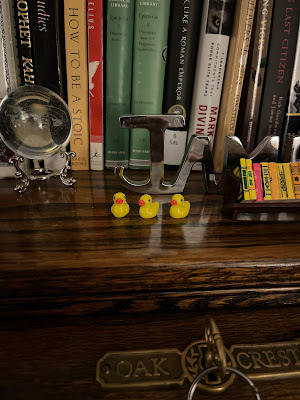Easter Wings
by George Herbert (1633)
Lord, who createdst man in wealth and store,
Though foolishly he lost the same,
Decaying more and more,
Till he became
Most poore:
With thee
O let me rise
As larks, harmoniously,
And sing this day thy victories:
Then shall the fall further the flight in me.
My tender age in sorrow did beginne
And still with sicknesses and shame.
Thou didst so punish sinne,
That I became
Most thinne.
With thee
Let me combine,
And feel thy victorie:
For, if I imp my wing on thine,
Affliction shall advance the flight in me.
I have been reading in the works of George Herbert, who penned a great work of poetry part of which was compiled in a book called "The Temple". This particular work contains two "pattern poems", one of which is pictured above. Unfortunately his poem "The Altar" does not show up well in this format. To view "The Altar" and short commentary,
go here .
What impresses me so much about this poem is that Theology becomes right-brained. In truth I could say that "man was created in perfect in God's image; man fell into sin and death entered the world and death through sin; man was separated from God; God loved man so much He sent His Son to die in man's place that he would not have to die for his sin; because God's Son rose from the dead the one who places his faith and trust in Him is raised from death to life."
Yes, these words are true. But how could that truth be put before our eyes in a way that every person in every culture could understand?
Found within God's creation is this living expression called "butterfly". This is the image George Herbert caught and presented to us by careful choice and arrangement of words, to show us not by the weakness of language, but by a common image. Look at the poem again--see the butterfly?
This image is a living demonstration of the downward spiral of man into sin, being "Most poore"; but, "with Thee" man begins his rise from decay into LIFE!
If you turn the butterfly over, looking underneath, you will see the author, mirrored, being "thinne" in poverty; but, "with Thee" being carried ("imp"-ed) on the wings of the Lord, carried to victory!
What picture do the words of your theology make?

